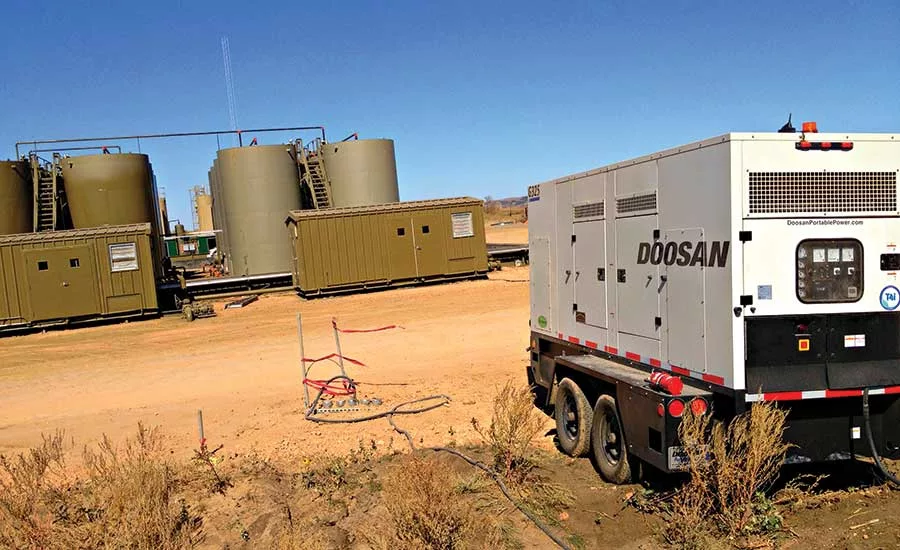Proactive Generator Maintenance a Benefit on Drilling Jobs

A more proactive approach to maintenance can help operators and drilling contractors maximize uptime. Source: Doosan Portable Power
Unplanned maintenance can place a financial strain on your company that can result in a direct loss of production, create higher costs for parts and increase service time. The best way to avoid surprises is to develop a comprehensive maintenance plan that supports the expected hours of machine usage and, by planning ahead for maintenance, to better predict expenses, minimize downtime and extend the life of your machine.
Routine Maintenance
Routine maintenance intervals are typically those service points outlined by the equipment manufacturer to ensure the proper performance on the machine. Regular maintenance intervals are usually based on hours of use or a time period.
Proactive Prevention
A planned maintenance program occurs on a predetermined or, as the name suggests, “planned” schedule. It goes a step beyond routine maintenance by offering more interaction with a machine by performing specific actions on a set schedule in an effort to reduce downtime and control maintenance costs. This includes services such as oil changes, visual checks of components, filter changes or other activities as outlined by an agreement with the dealership.
Comparing the two maintenance options is like getting an express oil change for your car versus getting an oil change for your car that also includes tire rotation, battery and brake system checks, and time in the wash bay.
Increased Uptime
The goal of a planned maintenance program is to eliminate the risk of downtime by identifying and resolving an issue before a machine failure occurs. The approach doesn’t prevent downtime altogether, but rather helps to control downtime and the associated cost of unexpected service, repairs and replacement parts.
For example, a leaky coolant hose discovered during planned maintenance will likely result in 30 minutes of downtime to replace the hose. With routine service, the leaky coolant hose may not be discovered for an extended period, resulting in more severe damage and potentially machine failure. By following a planned maintenance schedule, you not only control machine downtime, but can also save on the extra costs associated if after-hours labor and additional service repairs are necessary to fix the failure.
Longer Machine Life
Planned maintenance provides more intervention with a machine, a benefit that is especially important for generators located in remote locations and exposed to harsh environments like those common to the oil industry. Dust storms and excessive heat can contribute to advanced wear and tear of a machine when used in extreme environments. Even small animals, like rodents searching for a warm place to nest, can wreak havoc on your machine if not properly maintained with consistent interaction.
Planned maintenance ensures your machine is being inspected consistently regardless of the hours of usage. If a dust storm clogs the inlet filter before another 500 hours of usage has passed, a planned maintenance program ensures the filter will be replaced at the planned interval, whether that’s every two weeks, monthly or quarterly based on the customized agreement. With routine maintenance-only, it could be several months before a service technician interacts with the machine while waiting for the hour meter to trigger a check. That stretch of time increases the potential for small issues to go undetected and progress into costly machine failures.
Managing Risk and Cost
Determining the best approach to equipment maintenance is often decided by your comfort level for managing cost and risk. If your mobile generator fails, nearly every aspect of production at a drilling or extraction site is impacted, so it’s critical that your machine operates at peak performance. To do that, it’s important to know where the machine is in its lifecycle and be aware of any potential issues that could cause unplanned downtime. By working with your dealership to properly calculate planned maintenance, you can replace the element of surprise with peace of mind. Planned maintenance is a more proactive approach to ensure your machine adds value to your business — minimizing downtime, reducing costs, increasing productivity, protecting your investment and improving your bottom line.
Looking for a reprint of this article?
From high-res PDFs to custom plaques, order your copy today!



